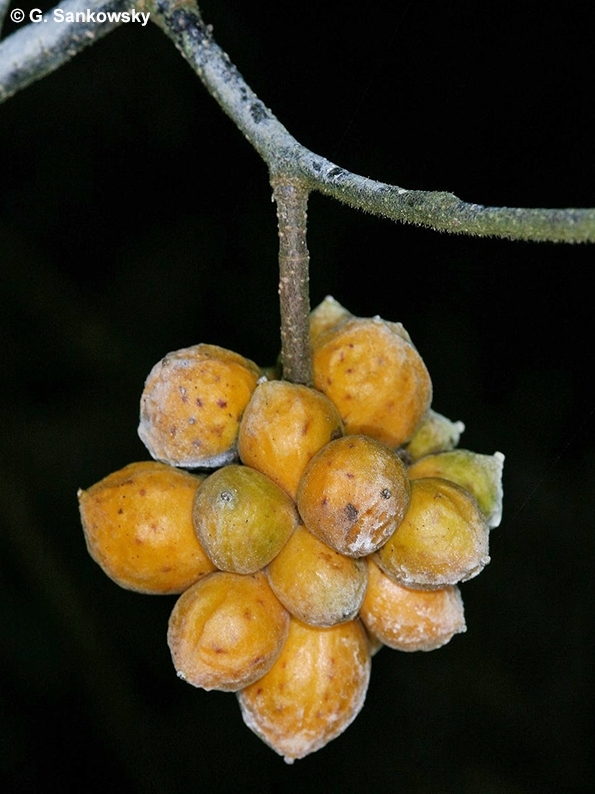Australian Tropical Rainforest Plants - Online edition
Pseuduvaria villosa Jessup






Jessup, L.W. (1984) Austrobaileya 2(3): 312. Type: Qld, Crawfords Lookout to Tchupalla Falls track, Palmerston National Park, 17 37 S, 145 47 E, 15 Feb. 1982, Jessup 472 & Tracey; holo: BRI.
Usually flowers and fruits as a shrub 2-3 m tall but can grow to 4 m tall.
Leaf bearing twigs densely clothed in pale brown or golden erect hairs. Twig bark strong and fibrous when stripped. Oak grain visible in transverse sections of the twigs. Leaf blades about 8-20 x 2-8 cm, hairy on both the upper and lower surfaces. Petioles short, about 0.2-0.5 cm long, densely clothed in pale brown or golden, erect hairs. Midrib clothed in hairs on the upper surface of the leaf blade. Lateral veins forming loops inside the blade margin.
Flowers on long pedicels about 2-5 cm long. Calyx hairy, lobes ovate or triangular, about 2.5-4 mm long, pubescent outside, glabrous inside. Outer petals broadly ovate, about 10-15 x 8-10 mm, pubescent outside, glabrous inside; inner petals pubescent outside, glabrous inside, forming a dome about 11-15 x 13-16 mm by fusion of the apices and lateral margins. Anthers sessile, about 1.1-1.3 x 0.8-1.0 mm. Staminodes present around the ovaries in the female flower. Ovaries about 40-50. Ovules 1 or 2 per ovary. Stigmas sessile on the ovaries.
Fruits consisting of about 20-40 carpels. Fruiting carpels about 15-20 mm long, sessile, borne in +/- globular heads on stalks about 3-5 cm long, surface clothed in short soft white hairs. Seeds one or two per carpel. Seeds irregular in shape, about 11-13 mm long. Testa brown, scrobiculate. Endosperm ruminate, testa intruding almost to the middle of the seed. Embryo minute, about 1 mm long.
First pair of leaves clothed in pale brown hairs at least when young. At the tenth leaf stage: oil dots quite numerous, visible with a lens. Petiole quite short, clothed in erect hairs. Terminal bud and young shoots clothed in pale brown to golden +/- erect hairs. Seed germination time 36 to 97 days.
Endemic to NEQ, restricted to the area between the North Johnstone River and Liverpool Creek. Altitudinal range from near sea level to 300 m. Grows as an understory shrub in well developed lowland and foothill rain forests frequently on soils derived from basalt.
Food plant for the larval stages of the Green Spotted Triangle Butterfly. Sankowsky & Neilsen (2000).





